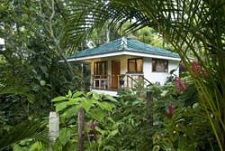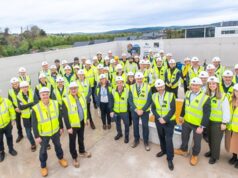 MANUEL ANTONIO, COSTA RICA—In their ongoing pledge to promote sustainable tourism in Costa Rica, Escape Villas announces the availability of eco tours through their 300-acre tract of Manuel Antonio rainforest that was purchased as a carbon offset project. In 2008, former President Oscar Arias declared his intentions for Costa Rica to become the world’s first carbon-neutral tourist destination by 2021, and since that time, the government has fast-tracked multiple strategies to reach that lofty goal.
MANUEL ANTONIO, COSTA RICA—In their ongoing pledge to promote sustainable tourism in Costa Rica, Escape Villas announces the availability of eco tours through their 300-acre tract of Manuel Antonio rainforest that was purchased as a carbon offset project. In 2008, former President Oscar Arias declared his intentions for Costa Rica to become the world’s first carbon-neutral tourist destination by 2021, and since that time, the government has fast-tracked multiple strategies to reach that lofty goal.
Escape Villas has adopted a multi-faceted approach to reducing their impact on the country’s natural resources. The company has been offering Costa Rica vacation rentals for more than 15 years, and remains dedicated to preserving the paradise that lures thousands of eco-travelers each year. As a testament to their commitment, Escape Villas purchased a 300-acre parcel of primary rainforest to help offset their carbon footprint. Located on the outskirts of Manuel Antonio near the Damas Estuary, the land remains undeveloped and is a critical habitat for native flora and fauna including the highly endangered Central American squirrel monkey (known in Costa Rica as the mono titi). With natural trails now in place, Escape Villas in inviting vacation rental guests to enjoy wildlife watching tours through the pristine reserve.
“By integrating sustainable business practices into our daily operations, we can help minimize the adverse impacts of traditional tourism on our surroundings while maintaining the integrity of Costa Rica’s natural resources,” said Escape Villas spokesperson Sara Hopkins. “The company aims to preserve the 300-acre reserve for future generations to come. In addition to this carbon offset initiative, the vacation rental operator also created a four-acre biological corridor with monkey bridges in the heart of Manuel Antonio—one of Costa Rica’s prime beach vacation destinations.
National Park is Attraction
“Also protected from future development, the corridor is part of our Eco-Project that was designed around Escape Villas’ vacation rentals and Manuel Antonio luxury villas,” Hopkins added. “More than half the land is dedicated to the local wildlife, with special emphasis on aiding the mono titi populations.” Each year, this Central Pacific town receives almost a quarter of a million tourists, thanks to the world-renowned Manuel Antonio National Park, which is prized for its picture-perfect beaches and biodiversity.
In Costa Rica, carbon offset projects are also utilized to restore forestland. Since rainforests are often considered the “lungs” of the planet, the country has instituted wide-scale reforestation programs to compensate for carbon emissions. According to recent studies by the Costa Rica MINAET (Ministry of Environment, Energy and Telecommunications), 52 percent of the country is now forested—a 31 percent increase since 1987. The local government has teamed up with the National Forestry Financing Fund to work with landholders in planting an additional 7 million trees on farmlands throughout country.
Ronald Sanabria, Rainforest Alliance director of sustainable tourism in Costa Rica, says the country’s carbon neutral goal is both “courageous and forward-thinking.” An estimated 85 percent of the nation’s energy is derived from renewable sources—including hydroelectric and geothermal means. And according to World Bank statistics, Costa Rica is one of the world’s lowest producers of toxic greenhouse gases. Its carbon dioxide output per unit of production dropped from 200 kilograms per unit to 170 kg in the last couple of years.
While the agricultural and transportation sectors remain the government’s biggest challenges in attaining carbon neutrality, many in the tourism industry are embracing green policies in order to mitigate environmental damage. As Sara Hopkins explains, Escape Villas has implemented a number of green practices, and strives to be a leader in eco-friendly politics. “In addition to recycling programs and our carbon offset initiatives, we run local beach cleanups and have planted over 500 trees in the Manuel Antonio area, 200 of which are Almendro—the preferred food of the endangered scarlet macaw.”
Click here for more information.






